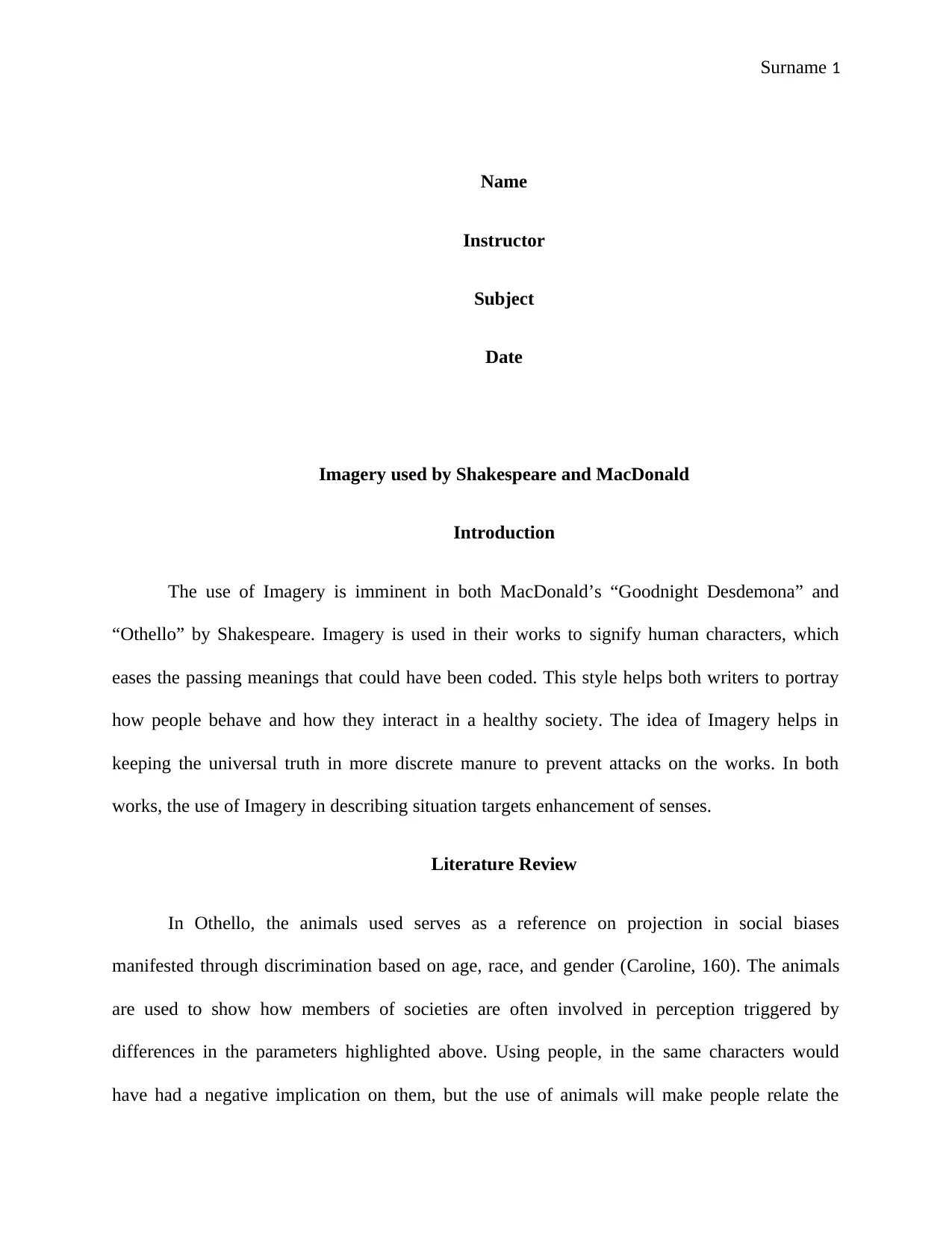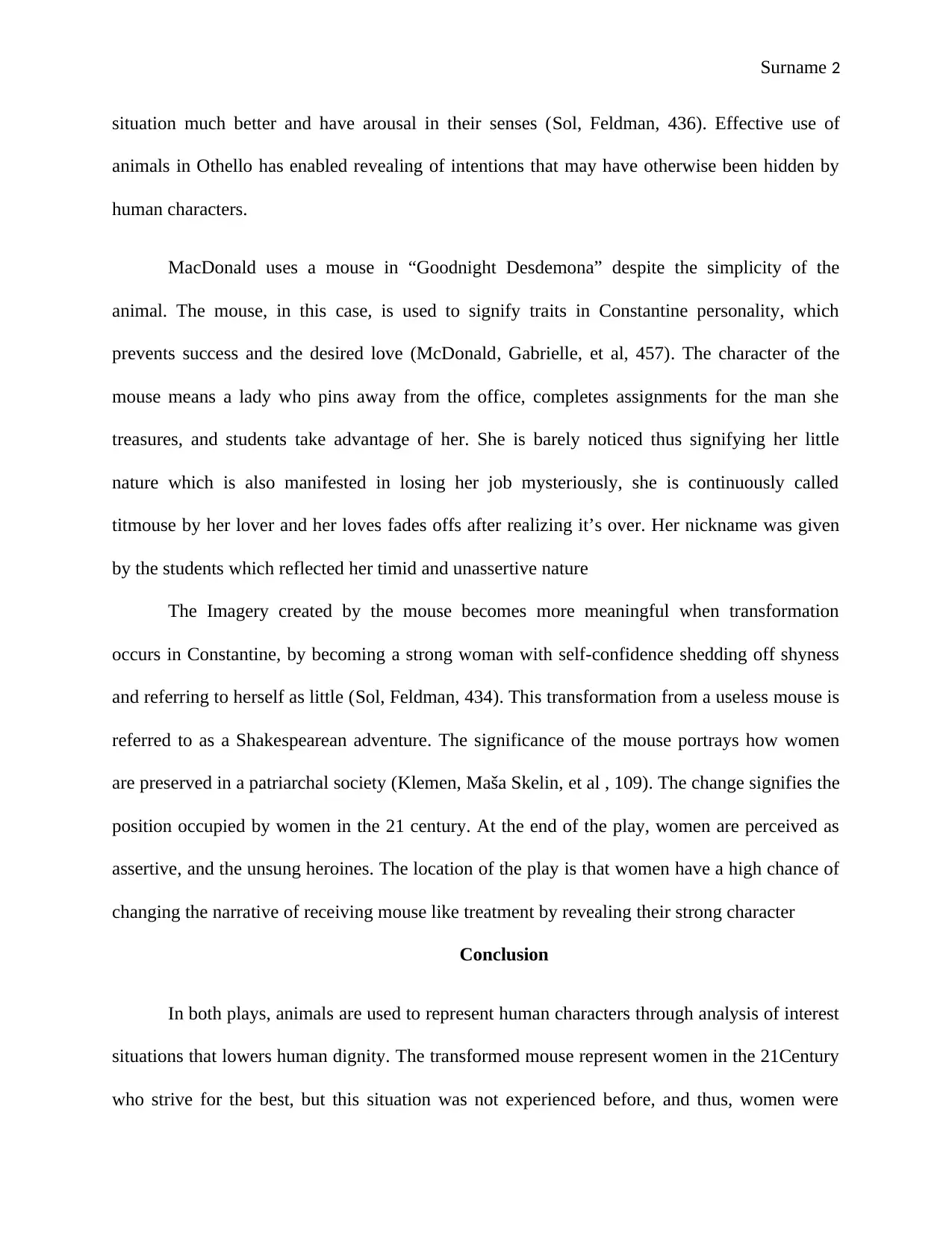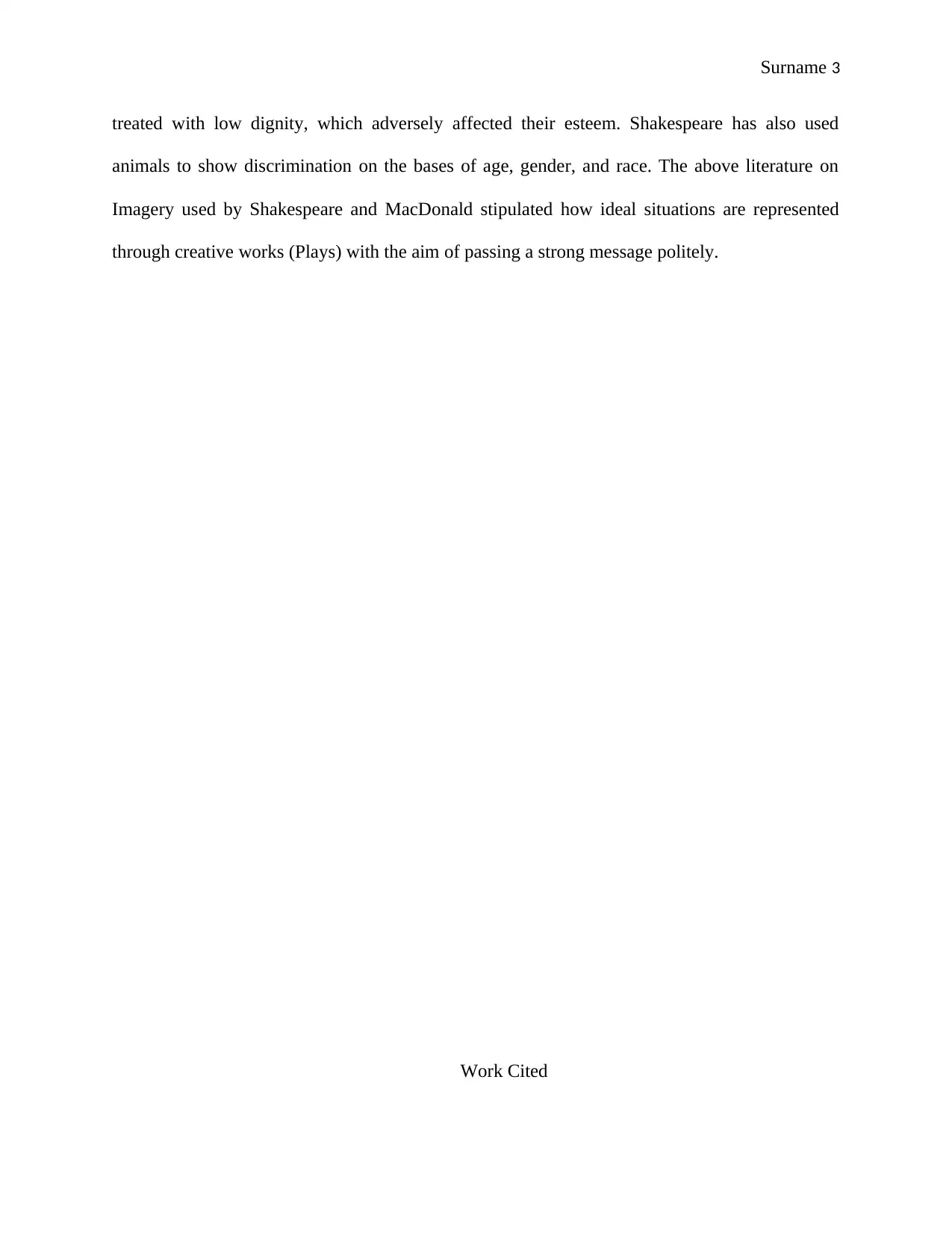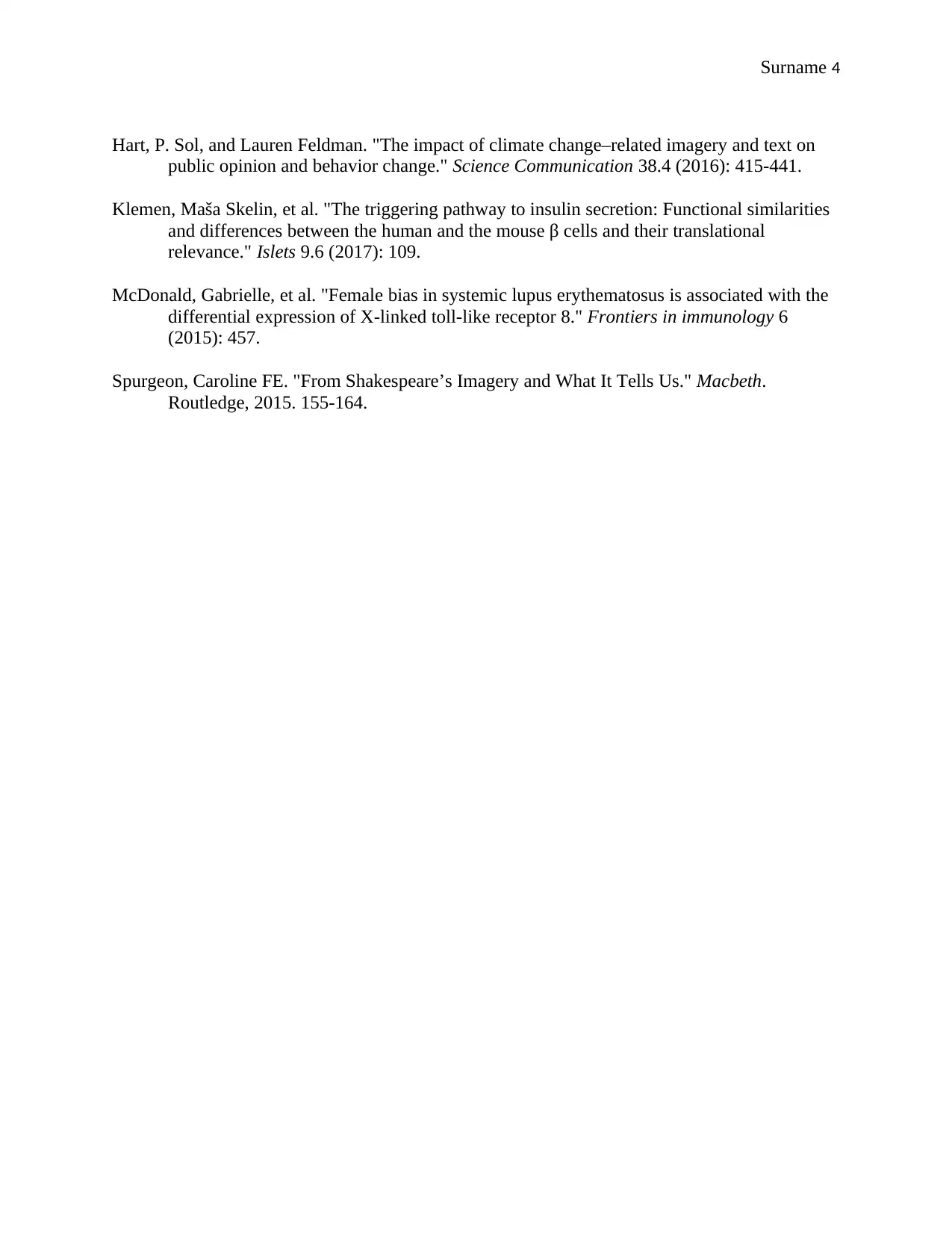A Comparative Study of Imagery in Shakespeare and MacDonald's Works
VerifiedAdded on 2022/11/24
|4
|757
|281
Essay
AI Summary
This essay provides a comparative analysis of imagery in Shakespeare's "Othello" and MacDonald's "Goodnight Desdemona." It explores how both authors employ imagery, particularly animal imagery, to represent human characters and convey complex themes. The essay examines how Shakespeare uses animals to reflect social biases based on age, race, and gender, while MacDonald utilizes a mouse to symbolize a character's personality and societal position. The analysis highlights the significance of these images in revealing hidden intentions and portraying character transformations, such as the evolution of a female character from a timid mouse to a strong, assertive woman. The essay concludes by emphasizing how both plays use imagery to critique societal norms and offer insights into human behavior. The essay references relevant literature to support the arguments.
1 out of 4







![[object Object]](/_next/static/media/star-bottom.7253800d.svg)